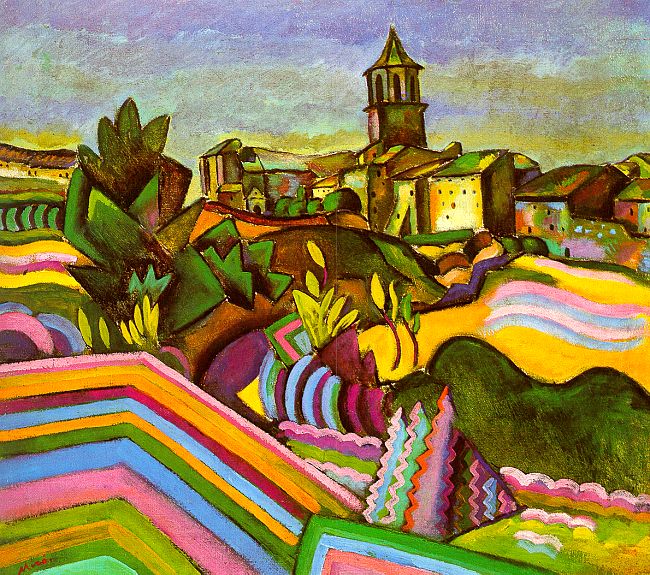Joan Miró is a Spanish artist who painted Prades, the Village or as it is known in Spanish, el poble in 1917. As a surrealist painter, Prades was his first painting in which he experimented with the surrealist form.
Pradee is a mixture of various artistic styles that create a different way of viewing a simple village scene. Miro has managed to create a certain Fauvist world in his use of shape, creative colours and bold outlines. Today Prades is housed in the Guggenheim Museum, in New York. Praises is most certainly a busy painting in that it is packed full of imagery, patterns and colours. Prades manages to fuse the bold colours, lines and geometrical shapes that are depicted on the canvas, in such a way that one does not dominate the other. All components work together beautifully on the canvas and complement the other, creating a seemless village scene.
When it comes to colour choice, Prades is a myriad of bright colours painted onto the canvas with bold and striking lines, that add definition to each colour while helping to separate one colour from another. We see yellows, pinks and the palest blues that are painted on the houses, the sky and even on the plants. The colour has been applied in block form in some areas, while it is used to define other areas in its use of splashes and blotches. With regards to the architecture, it appears that they have been painted realistically in perfect composition. What is surreal about them is the use of colour depiction, with some houses having been painted in many different colours. This use of bright colours helps to create a sense of happiness and belonging and ultimately creates an uplifting image.
To the left of the canvas we see a series of lines that are different to those in the rest of the image. They almost appear to make this area of the panting appear flat. This is in direct contrast to the rest of the image which is so full of life. There is however, bright colours interposed into the lines, which do link this part of the painting to the rest of the work.




